Sylvania E14 LED Lamps Dimmable

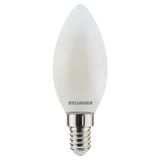
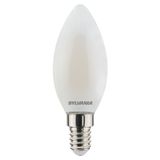
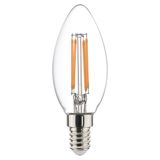

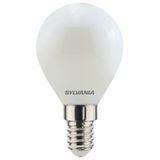
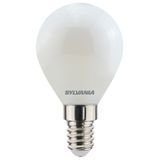

sylvania e14 dimmable led lamps range and project context
Small-base retrofits live in sconces, chandeliers, and task heads where space is tight and glare control matters. Drivers are tuned for 220–240 V AC, 50/60 Hz with PF up to ≥0.9 (model dependent), THD within office limits, declared inrush for Type B/C MCB sizing, and surge typically 1–2 kV L–N. Output bands run ~250–800 lm, CRI 80 standard with CRI 90 options, CCT 2700/3000/4000 K in ≤3-step SDCM. When projects lock envelope sizes and lumen classes by room type, sylvania e14 dimmable led lamps keep commissioning predictable without touching shades or bezels.
sylvania e14 dimmable bulbs photometrics and dimming behaviour
Opal crowns deliver uniform shade fill; clear “filament” variants keep a heritage look with controlled high-angle luminance. Recommended practice: validated trailing-edge dimmers, low-level scenes at 10–20 %, and flicker targets Pst LM < 1.0 and SVM < 0.9 at maintained levels. In camera-heavy spaces, specifiers pick sylvania e14 dimmable bulbs to avoid shimmer and stepping at low scenes while holding colour continuity across phases.
sylvania small base dimmable lights installation and compatibility
Caps follow IEC 60061; check holder spring force and heat ageing in legacy fittings. Keep earth continuity in metal shades, confirm minimum-load constraints on old phase packs, and document the approved dimmer matrix per circuit. Terminals in quality lampholders accept 0.5…2.5 mm² copper per EN 60999. Maintenance teams standardise sylvania small base dimmable lights so mixed floors behave the same after refurb cycles.
sylvania dimmable candle lamps optics and form factors
Candle and bent-tip bodies suit open luminaires; crown diffusers control sparkle without spiky glare. Lumen classes around 250–470 lm support decorative clusters, while 600–800 lm variants cover reading lights and corridor domes. With CRI 90 and warm 2700 K, sylvania dimmable candle lamps keep timber and textiles honest in hospitality while staying inside UGR constraints when used behind shallow shades.
sylvania decorative dimmable e14 lamps applications in hospitality and housing
Lobby runs want warm whites and tight binning so adjacent rooms read as one surface; apartments benefit from calm fades and documented low-level scenes for night routes. Where fittings are visible, short-neck envelopes prevent diffuser contact; ripple is held within workspace guidance to protect comfort. Designers mark sylvania decorative dimmable e14 lamps on drawings when ambience has to land without changing holders or cut-outs.
sylvania adjustable e14 led bulbs controls and scene design
Rooms with mixed tasks use upstream scene engines (DALI-2/1–10 V) to drive contactor-fed circuits; sockets run fixed mains while scenes set level. Publish minimum on-time to avoid rapid cycling under presence control, and keep standby 10–20 % on egress routes. Procurement flags sylvania adjustable e14 led bulbs where low-level stability is validated alongside the chosen dimmer sets.
sylvania energy efficient e14 dimmable lights selection and procurement
Start from target lux and vertical illuminance, then lock lumen band and CCT/CRI by zone. Record PF at dim, declared inrush, and surge so breaker diversity holds during rollout. For enclosed domes, confirm ambient and choose short-neck bodies; label circuits with the approved dimmer list to prevent ad-hoc swaps. Energy teams rely on sylvania energy efficient e14 dimmable lights to deliver kWh savings without disturbing wiring or shade geometry.
Technical specifications and standards for engineers
- Electrical: 220–240 V AC; PF up to ≥0.9 (model dependent); THD ≤15 %; declared inrush; surge 1–2 kV L–N.
- Photometric: 2700/3000/4000 K; CRI 80/90; ≤3-step SDCM; ~250–800 lm; efficacy ≈100–130 lm/W.
- Thermal/operating: −20…+40/50 °C; short-neck options for enclosed domes; rear-biased thermal paths.
- Flicker: design to Pst LM < 1.0, SVM < 0.9 with validated trailing-edge dimmers.
- Compliance: IEC/EN 62560 self-ballasted, EN 61347 driver safety, EN 55015 emissions, EN 61000-3-2 harmonics, EN 62471 photobiological.
Applications and compatibility notes
- Hospitality and housing: warm CRI-90 scenes, calm low-level operation, labelled circuits for cleaning mode.
- Offices/education: neutral whites in wall lights with UGR handled by the luminaire; publish dimmer minimum-load policy.
- Heritage fittings: filament-style optics with controlled luminance; verify envelope length and glass clearance.
Always inspect holders for brittleness and contact resistance; replace worn collars to avoid intermittent behaviour.
Integration with Sylvania systems
Align CCT/CRI with Sylvania panels and linears in adjacent zones. Where presence/daylight logic is required, keep it upstream on Sylvania automatics so scene policy, minimum on-times, and emergency routing remain consistent across floors.